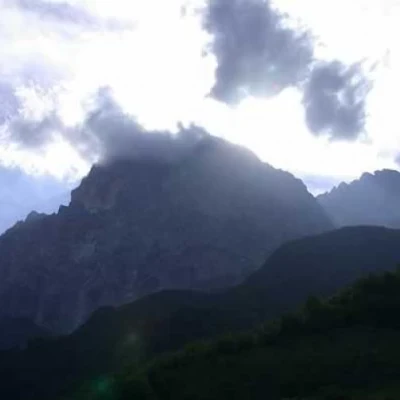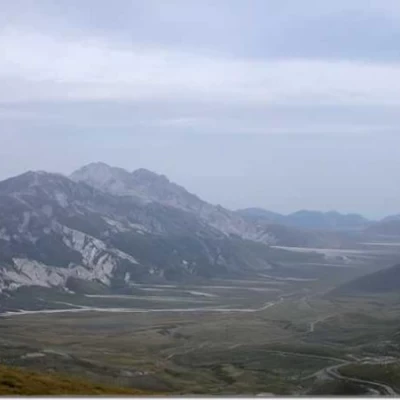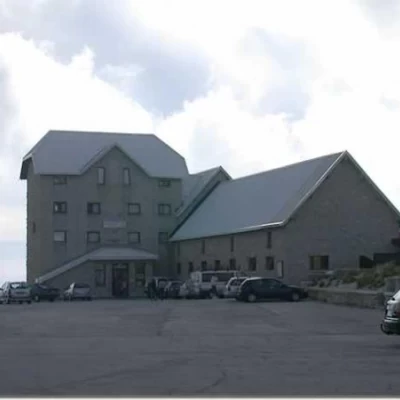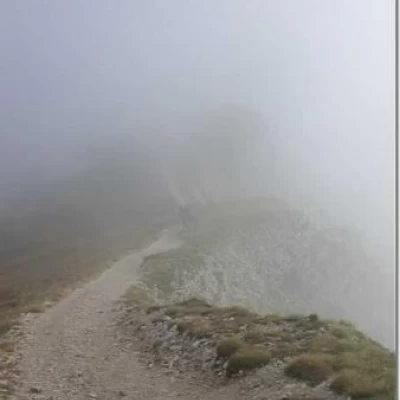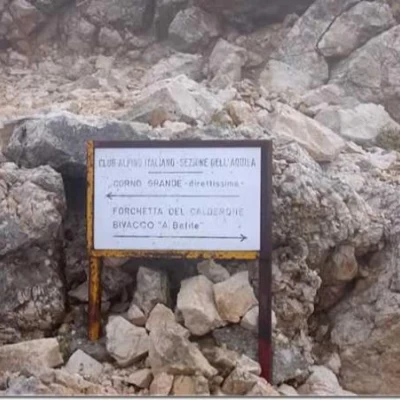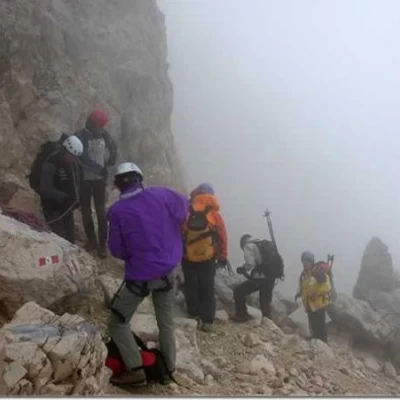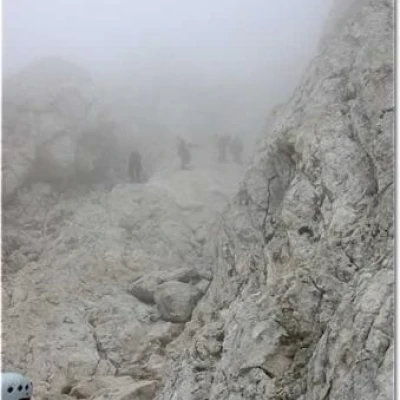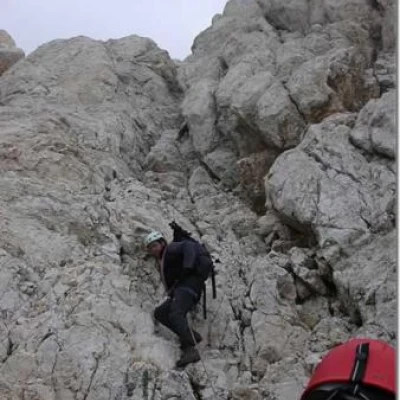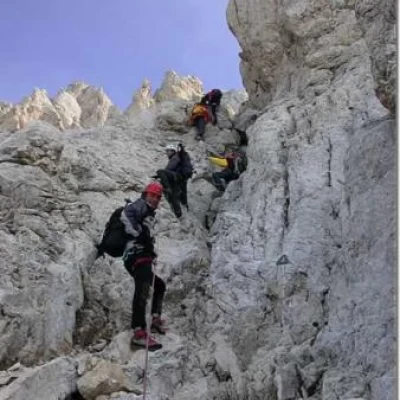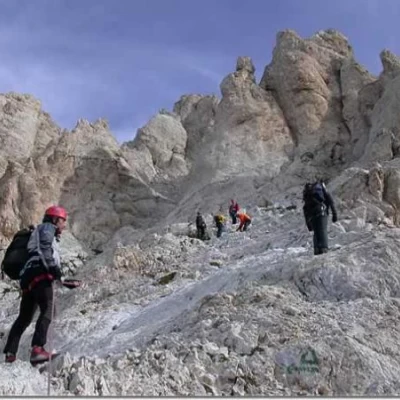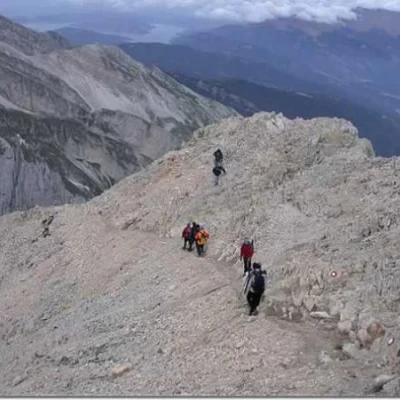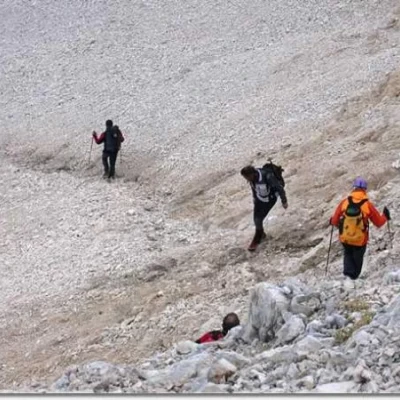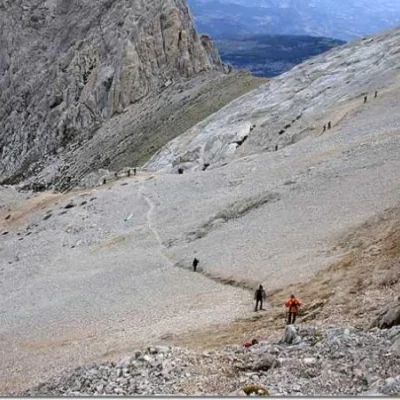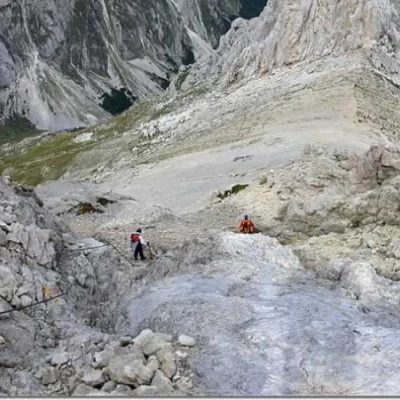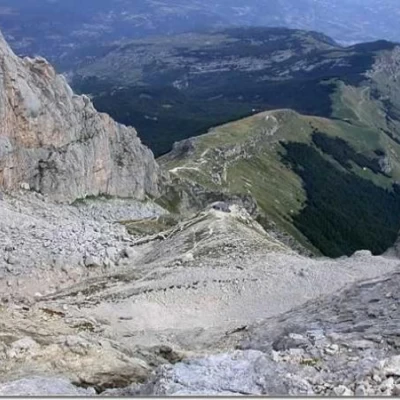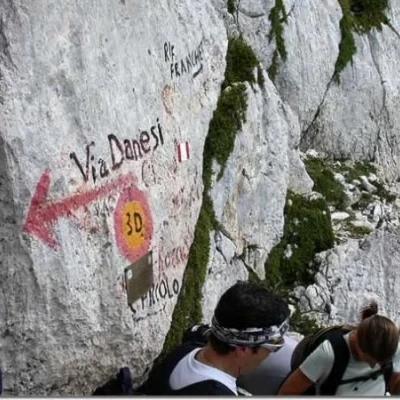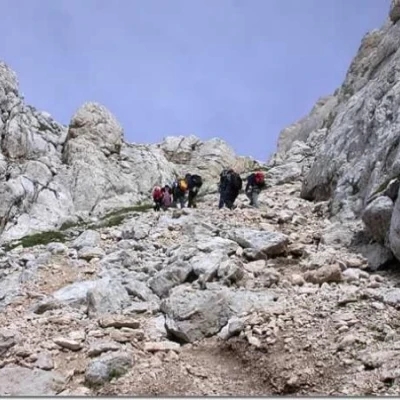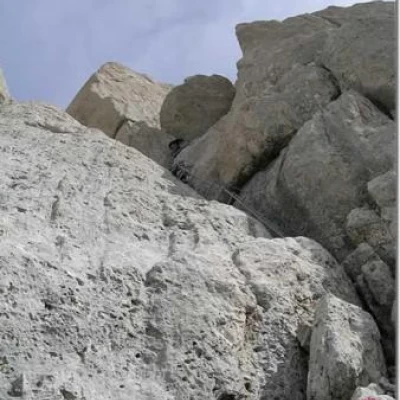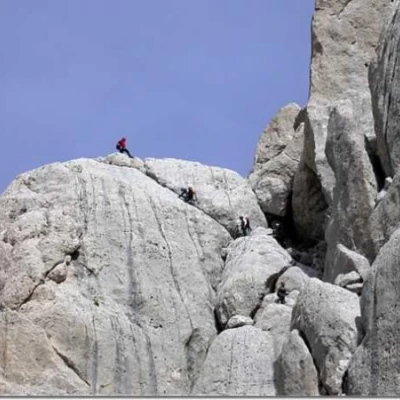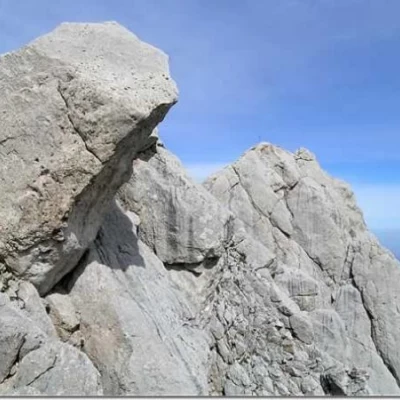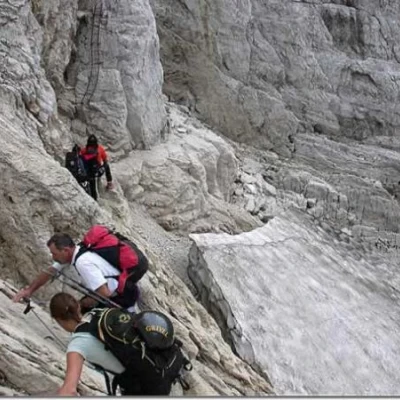Corno Grande, from Campo Imperatore
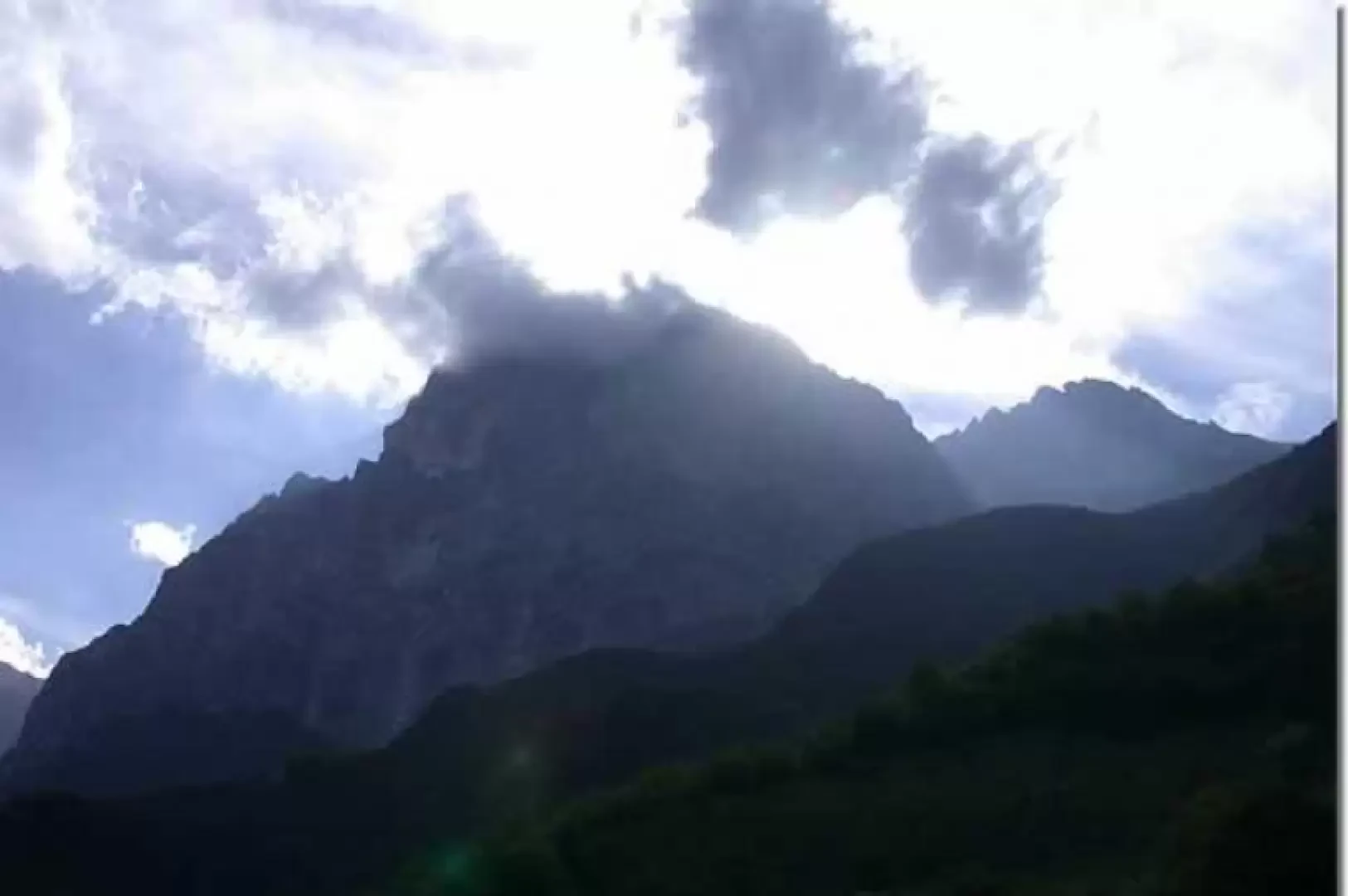
Introduction
More than an actual report, also due to the adverse weather conditions at the beginning, this article is primarily the chronicle of a wonderful day in the mountains.
Description
After a night of blizzard weather, totally unexpected in mid-September, we wake up to still strong winds and fog rising from L'Aquila. The forecast indicates an improvement and we confidently set off anyway: we haven't covered 800 km by car to give up without even trying! The wind makes the temperature unpleasant and the humidity of the fog, in addition to spoiling the landscape, freezes the bones of those who, as northern mountaineers, are used to cold temperatures, but also to much lower relative humidity. The consequence is the fast pace, favoured by an initial route that is as clear as a motorway and with few elevation gain. (Signposts 3 - 4 and indicator panels at the crossroads). After an hour's walk, you arrive at the start of the via Direttissima, located at the junction with the path equipped for the suggestive Bafile bivouac: a real eagle's nest. For those who don't want to take too many risks, now is the time to put on the harness, tie up and above all wear a helmet: the possibility of seeing unwanted projectiles fall is quite high, especially considering how crowded it was. For us, it was the last bit of cold weather. Then the sky opened up as predicted, although the wind never deprived us of its refreshing presence. The via direttissima is a simple grade II - III climb, which the more experienced climbers can tackle even without bolting. The route is marked with large signs in green paint and climbing shoes are not even necessary. Please note, however, that these considerations are intended for people of good experience and technical level. We have managed to collect a good number of unedifying anecdotes about improvised mountaineers who even here have managed to endanger their own lives and those of others! At the summit, the landscape is certainly beautiful and rewarding, even if the visibility conditions are not perfect. We instinctively opted for the descent on the west ridge, which is rather exposed but well signposted with red and white markers, only to realise that returning immediately to the refuge would have condemned us to more than half a day of starvation. So we cut along a track to reach the obvious path of the so-called Via Normale (no. 3) and thus climb up to the junction with the path that climbs from the Sella dei Due Corni. Then off downhill along the equipped section: destination the Corno Piccolo. A few metres downstream (west side) of the watershed formed by the Sella dei Due Corni (i.e. the one opposite the Franchetti hut), the via ferrata known as "Via Danesi" begins, which at first turns out to be a simple steep path up a small gully. The route is always indicated by large red and white marks. The main difficulty arises a short distance from the summit, when one is faced with the option between squeezing through a hole in the rock or continuing along a small, very exposed ledge. Then all that remains is to continue cautiously towards the summit. The return can be done on the same route or by following yet another 'normal route', which comes out a few metres downstream of the Danesi route attack. Much to the (posthumous) scandal of the local experts, we then chose not to climb back up to Corno Grande to rejoin the normal route no. 3, but to cut across a precipitous wall along which runs a via ferrata in not perfect condition: the via ferrata Brizio. It is reportedly considered unsafe if not downright dangerous. In fact, some anchorage was dubious and at least one step of a ladder was torn off, but if truth be told, it did not occur to any of us that it might be a route 'closed to the public'. The normal safety precautions and the caution that must always be exercised made the route seem particularly impressive and decidedly beautiful and fun. We were thus able to skim what is probably the last perennial snowfield to have survived the climate changes of the late 20th century, and which unfortunately seems destined to disappear altogether. It was the southernmost glacier in Europe. The result of this 'out of order' cut was to find ourselves practically effortlessly and in less than an hour well below the junction between the normal route no. 3 and the ridge route no. 3A at an altitude of around 2500m. A short descent into the valley below the Vetta Occidentale, along a path traced out in the moraine, and we once again reached the pastures, while the Gran Sasso watched over us from afar; even the Bafile bivouac stood out on the horizon in full sunlight. A long traverse halfway up the mountainside brings us to the junction between trails 2 and 3. The one heading for the Duca degli Abruzzi refuge, the other taking us back to Campo Imperatore. Knowing that the beer and the shower are close by, the last sections of the trail quickly devour and complete an unforgettable day.
.Bibliography
- L.Grazzini, P.Abbate, Guida ai Monti d'Italia - Gran Sasso d'Italia, Milano,
- A.Alesi, M.Calibani, A.Palermi, Gran Sasso le più belle escursioni, SER
Cartografia
- CAI L'Aquila, Gran Sasso Laga National Park, Gran Sasso d'Italia, 1:25000, Firenze 1999
